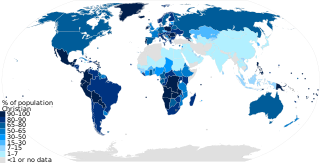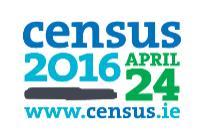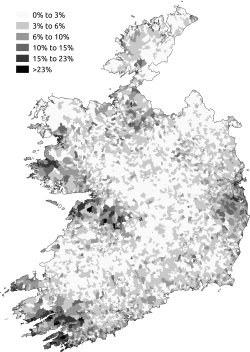Irreligion is the absence or rejection of religious beliefs or practices. It encompasses a wide range of viewpoints drawn from various philosophical and intellectual perspectives, including atheism, agnosticism, skepticism, rationalism, and secularism. These perspectives can vary, with individuals who identify as irreligious holding a diverse array of specific beliefs about religion or its role in their lives.

As of the year 2023, Christianity had approximately 2.4 billion adherents and is the largest religion by population. According to a PEW estimation in 2020, Christians made up to 2.38 billion of the worldwide population of about 8 billion people. It represents nearly one-third of the world's population and is the largest religion in the world, with the three largest groups of Christians being the Catholic Church, Protestantism, and the Eastern Orthodox Church. The largest Christian denomination is the Catholic Church, with 1.3 billion baptized members. The second largest Christian branch is either Protestantism, or the Eastern Orthodox Church.

Religion has been a major influence on the societies, cultures, traditions, philosophies, artistic expressions and laws within present-day Europe. The largest religion in Europe is Christianity. However, irreligion and practical secularisation are also prominent in some countries. In Southeastern Europe, three countries have Muslim majorities, with Christianity being the second-largest religion in those countries. Ancient European religions included veneration for deities such as Zeus. Modern revival movements of these religions include Heathenism, Rodnovery, Romuva, Druidry, Wicca, and others. Smaller religions include Indian religions, Judaism, and some East Asian religions, which are found in their largest groups in Britain, France, and Kalmykia.
Accurate demographics of atheism are difficult to obtain since conceptions of atheism vary considerably across different cultures and languages, ranging from an active concept to being unimportant or not developed. Also in some countries and regions atheism carries a strong stigma, making it harder to count atheists in these countries. In global studies, the number of people without a religion is usually higher than the number of people without a belief in a deity and the number of people who agree with statements on lacking a belief in a deity is usually higher than the number of people who self-identify as "atheists".

The predominant religion in the Republic of Ireland is Christianity, with the largest denomination being the Catholic Church. The Constitution of Ireland says that the state may not endorse any particular religion and guarantees freedom of religion.
Atheism, in the broadest sense, is an absence of belief in the existence of deities. Less broadly, atheism is a rejection of the belief that any deities exist. In an even narrower sense, atheism is specifically the position that there are no deities. Atheism is contrasted with theism, which in its most general form is the belief that at least one deity exists.

Atheism, agnosticism, scepticism, freethought, secular humanism or general irreligion are increasing in Australia. Post-war Australia has become a highly secularised country. Religion does not play a major role in the lives of much of the population.
According to sociologists as of 2022, "the proportion of atheists in the US has held steady at 3% to 4% for more than 80 years." According to the Pew Research Center in a 2014 survey, self-identified atheists make up 3.1% of the US population, even though 9% of Americans agreed with the statement "Do not believe in God" while 2% agreed with the statement "Do not know if they believe in God". Other polling by Gallup in 2022 showed that 17% of respondents replied "No" when asked "Do you believe in God?", and another from 2023 found that 12% of respondents replied they "Do not believe in" God with 14% replying they were "Not sure about" the existence of God. Regardless of question or polling service, there is evidence the number of people not believing in God is increasing.
Atheism and agnosticism have a long history in India and flourish within the Śramaṇa movement. Indian religions like Jainism, Hinduism and Buddhism consider atheism to be acceptable. Doubt has been ingrained even in Indian spiritual culture. India has produced some notable atheist politicians and social reformers. Around 0.7 million people in India did not state their religion in the 2001 census and were counted in the "religion not stated" category. They were 0.06% of India's population. Their number has significantly increased four times, from 0.7 million in the 2001 census to 2.9 million in the 2011 census at an average annual rate of 15%. According to the 2012 WIN-Gallup Global Index of Religion and Atheism report, 81% of Indians were religious, 13% were non-religious, 3% were convinced atheists, and 3% were unsure or did not respond, while a demographic study by Cambridge University Press in 2004 found that around 2-6% of Indians identified as atheists or irreligious.

Estonia, historically a Lutheran Christian nation, is today one of the least religious countries in the world in terms of declared attitudes, with only 14 percent of the population declaring religion to be an important part of their daily life. This is thought to largely be a result of the Soviet occupation of Estonia in 1940, prior to which Estonia had a large Christian majority.

Pakistanis are the citizens and nationals of the Islamic Republic of Pakistan. According to the 2017 Pakistani census, the population of Pakistan stood at over 213 million people, making it the world's fifth-most populous country. The majority of Pakistanis natively speak languages belonging to the Indo-Iranic family.

The 2011 census of Ireland was held on Sunday, 10 April 2011. It was administered by the Central Statistics Office of Ireland and found the population to be 4,588,252 people. Before the census, the latest population estimate was published in September 2010 and calculated that the Irish population had been 4,470,700 in April 2010. The previous census took place five years earlier, on Sunday, 23 April 2006. The subsequent census took place five years later, on 24 April 2016.
Irreligion is present among a minority of mainly young people in Pakistan. Atheists in Pakistan face discrimination, persecution, and prejudice in society. Pakistan is reported by some sources to be among the thirteen countries where atheism can attract capital punishment, but according to the Library of Congress of the United States, "there is no specific statutory law that criminalizes apostasy in Pakistan." On the other hand, the Pakistani government can impose the death penalty for blasphemy.

Irreligion in Estonia pertains to atheism, agnosticism, and secularism of the people and institutions of Estonia. Irreligion is prominent in Estonia, where a majority of citizens are unaffiliated with any religion. Estonian irreligion dates back to the 19th century, when Estonian nationalists and intellectuals deemed Christianity a foreign religion in opposition to Estonian independence. Irreligion in Estonia was later accelerated by the Soviet occupation of the Baltic states, in which state atheism was enforced. By some metrics, Estonia is the most irreligious country in the world.
China has the world's largest irreligious population, and the Chinese government and the ruling Chinese Communist Party (CCP) are officially atheist and have conducted antireligious campaigns throughout their rule. Religious freedom is nominally protected under the Chinese constitution. Among the general Chinese population, there are a wide variety of religious practices. The Chinese government's attitude to religion is one of skepticism and non-promotion.
Irreligion in Azerbaijan is open to interpretation according to differing censuses and polls. Although Shia Islam is the predominant faith in Azerbaijan, religious affiliation is nominal in Azerbaijan and percentages for actual practicing adherents are much lower. It is difficult to quantify the number of atheists or agnostics in Azerbaijan as they are not officially counted in the census of the country.
Irreligion in Latin America refers to various types of irreligion, including atheism, agnosticism, deism, secular humanism, secularism and non-religious. According to a Pew Research Center survey from 2014, 8% of the population is not affiliated with a religion. According to Latinobarómetro, the share of irreligious people in Latin America quadrupled between 1996 and 2020, from 4% to 16%.
Irreligion in Romania is rare. Romania is one of the most religious countries in Europe, with 92% of people saying that they believe in God. Levels of Irreligion are much lower than in most other European countries and are among the lowest in the world. At the 2011 census, only 0.11% of the population declared itself atheist, up from the 2002 census, while 0.10% do not belong to any religion. While still one of the most religious countries in Europe, practicing, church and mass attendance is quite low, even compared to some less religious countries than Romania. It is mainly practiced by elderly people, mainly in rural areas, while in urban areas church attendance and practice is much lower. As of 2021, almost 85% are declared religious, of which about 73% are declared orthodox, 12% other religions, about 1% atheists or irreligious and about 14% declared nothing about religion.

The 2016 census of Ireland was held in 2016. It was organised by the Central Statistics Office (CSO) and reported a total population of 4,761,865, or a 3.8% increase since the prior 2011 census. This was the lowest recorded population growth rate since the 1991 census, with the decline in population growth rates attributed to both lower birth rates and lower net migration. The census results were released gradually between April and December 2017 in a series of reports organised either as summaries or in-depth results of specific themes, like age, ethnicity, or religion.









